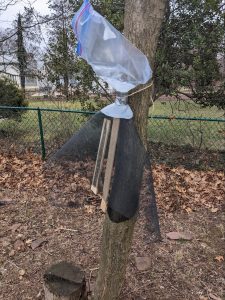Kevin Wright’s Eagle Report
Making Spotted Lanternfly Traps with BSA Troop 33
Hi, I’m Kevin! For my Eagle Scout project, I chose to make spotted lanternfly traps. You too can make them at home with a few basic supplies.
Spotted lanternflies are a dangerous invasive species. They are parasites that feed on the sap of trees, destroying the bark and eventually killing the tree. This makes these bugs a threat to normal natural ecosystems. Other traps have been developed that catch lanternflies using sticky bands around trees, but other animals can get stuck too, which makes them a bad trap choice. Instead, I decided to use a special trap design that catches lanternflies without harming other species.
When young spotted lanternflies find a tree, they tend to crawl up the trunk towards the sunlight above. This trap exploits that tendency to catch the bugs in a plastic bag. The trap design is easy to construct and can be made in a few minutes with materials from a local hardware or craft store.
To make one trap, you’ll need these supplies:
- 30″ x 23″ insect/window screening
- 2 paint stirrers, one 12” and one 21”
- About 32″ of wire or twine
- 2 1-gallon milk jugs
- 1-gallon Ziploc bag
- Duct tape
- Zip tie
- Thumbtacks
You will also need these tools:
- Hot glue gun
- Stapler or staple gun
- Scissors
To build the trap, follow the steps below.
- Cut the tops off of two plastic 1-gallon milk jugs as shown.
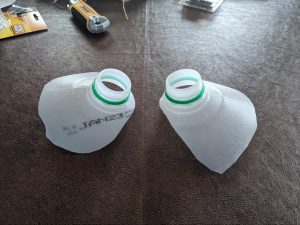
- Use a hot glue gun and duct tape to secure the tops of the jugs as shown below. It should form a double-sided funnel shape.

- Cut a 30” x 23” piece of insect screening and fold in the corners on the long side as shown. Cut a small half-circle from the point formed where the two corners meet, shown at the bottom here.

- Form a cone with the insect screening with the cutout at the bottom. Use hot glue to fasten it to one side of the funnel. Make sure there are no gaps for the bugs to escape through.
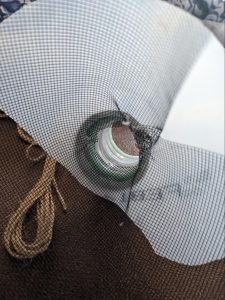
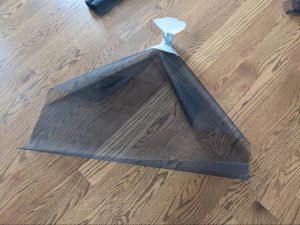
- On one side of the funnel, attach the 21-inch wooden piece to the edge of the funnel and to the netting using a staple gun. Attach the 12-inch wooden piece to the other side of the netting opposite the 21-inch piece.
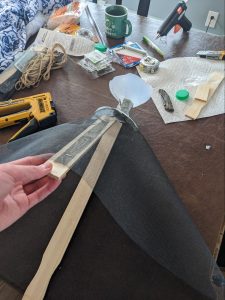
- Use duct tape and/or office staples to attach a piece of wire or twine to the neck of the funnel. It should be long enough to wrap around the circumference of the tree you are putting the trap on.
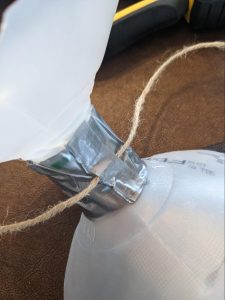
- Cut off the corner of the plastic bag and attach it to the side of the funnel opposite the netting using hot glue. Wrap the twine/wire attached to the trap around the tree. Use thumbtacks to fasten the string and the edges of the netting to the tree. Holding the netting down allows the trap to collect the maximum amount of spotted lanternflies.
